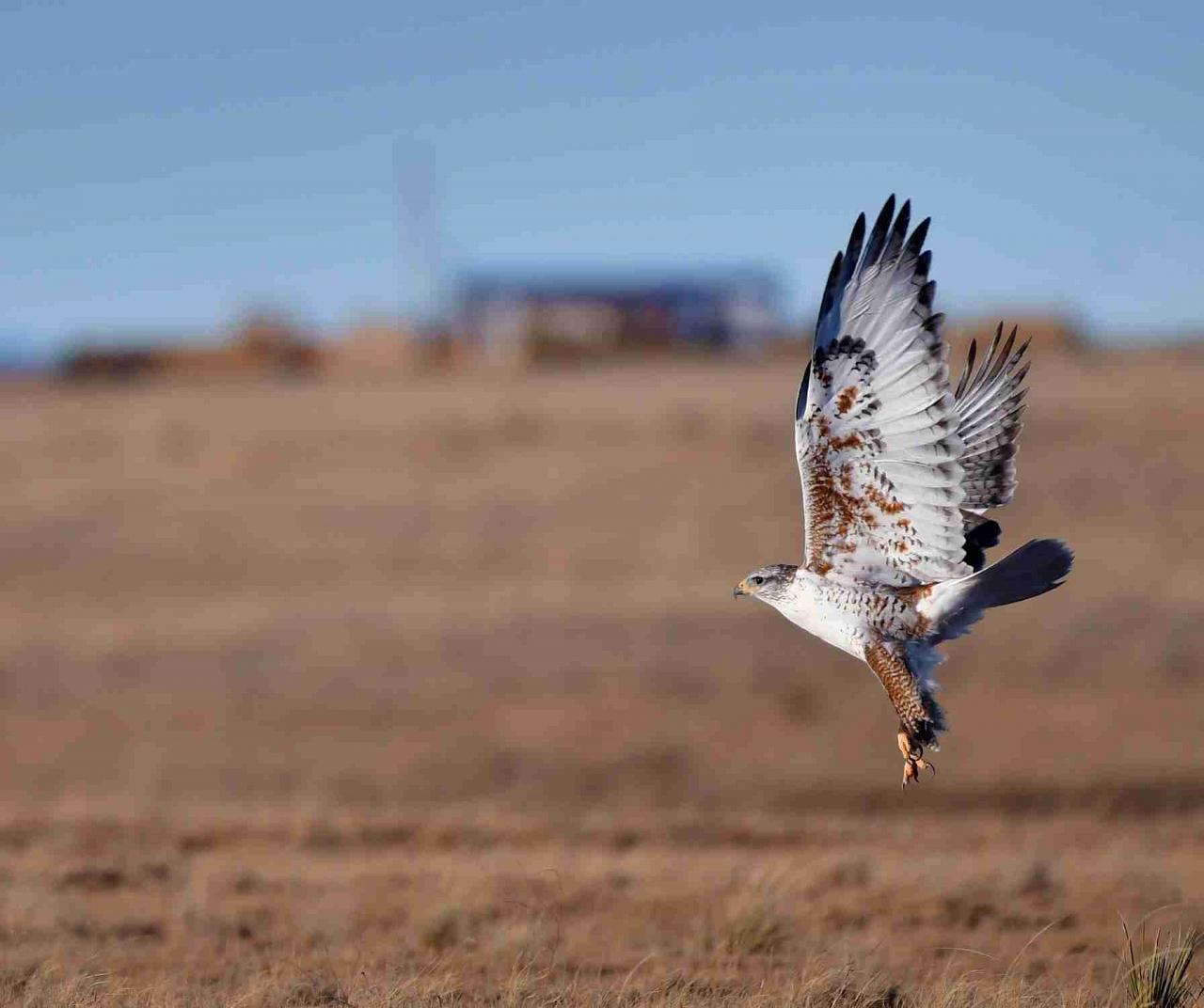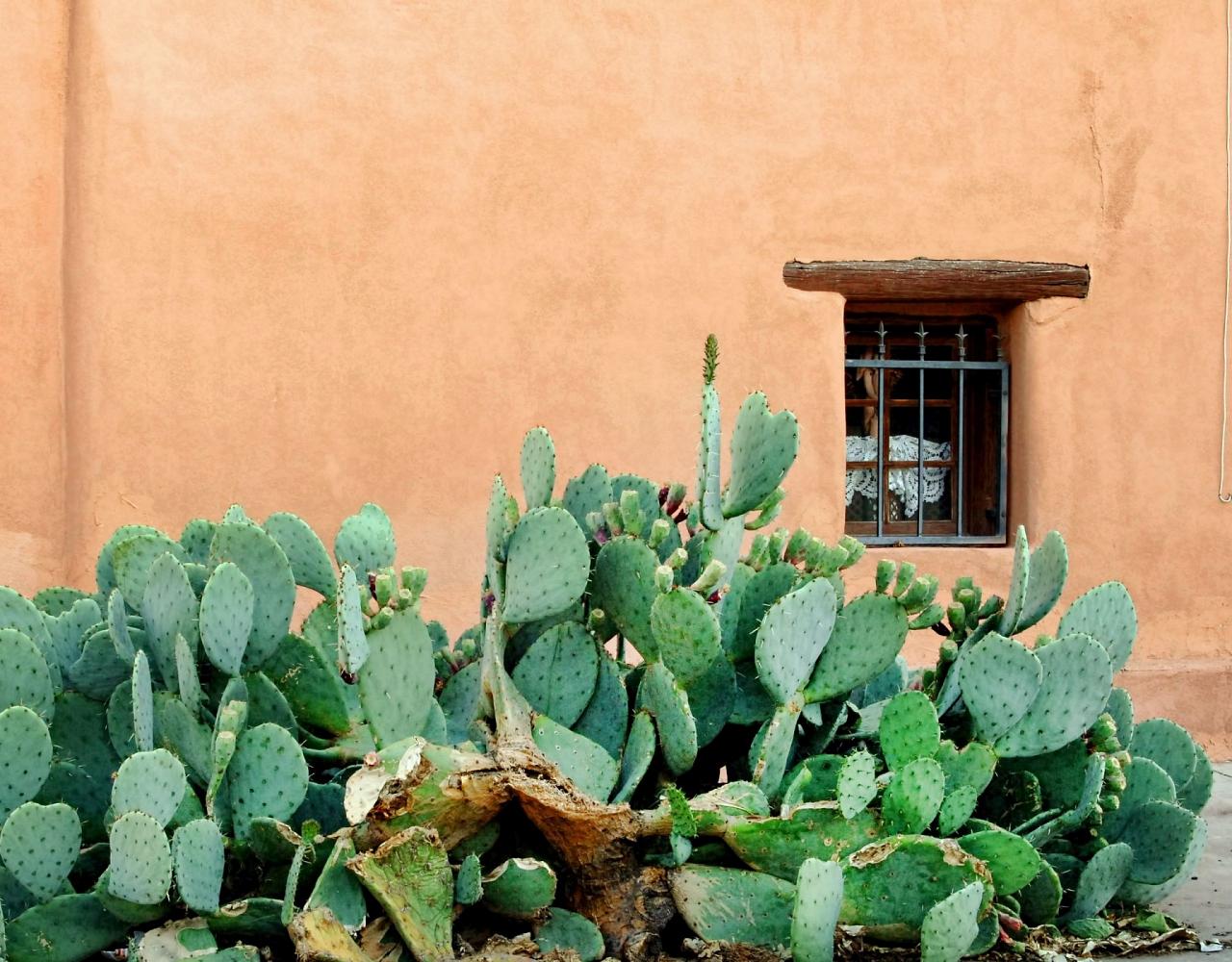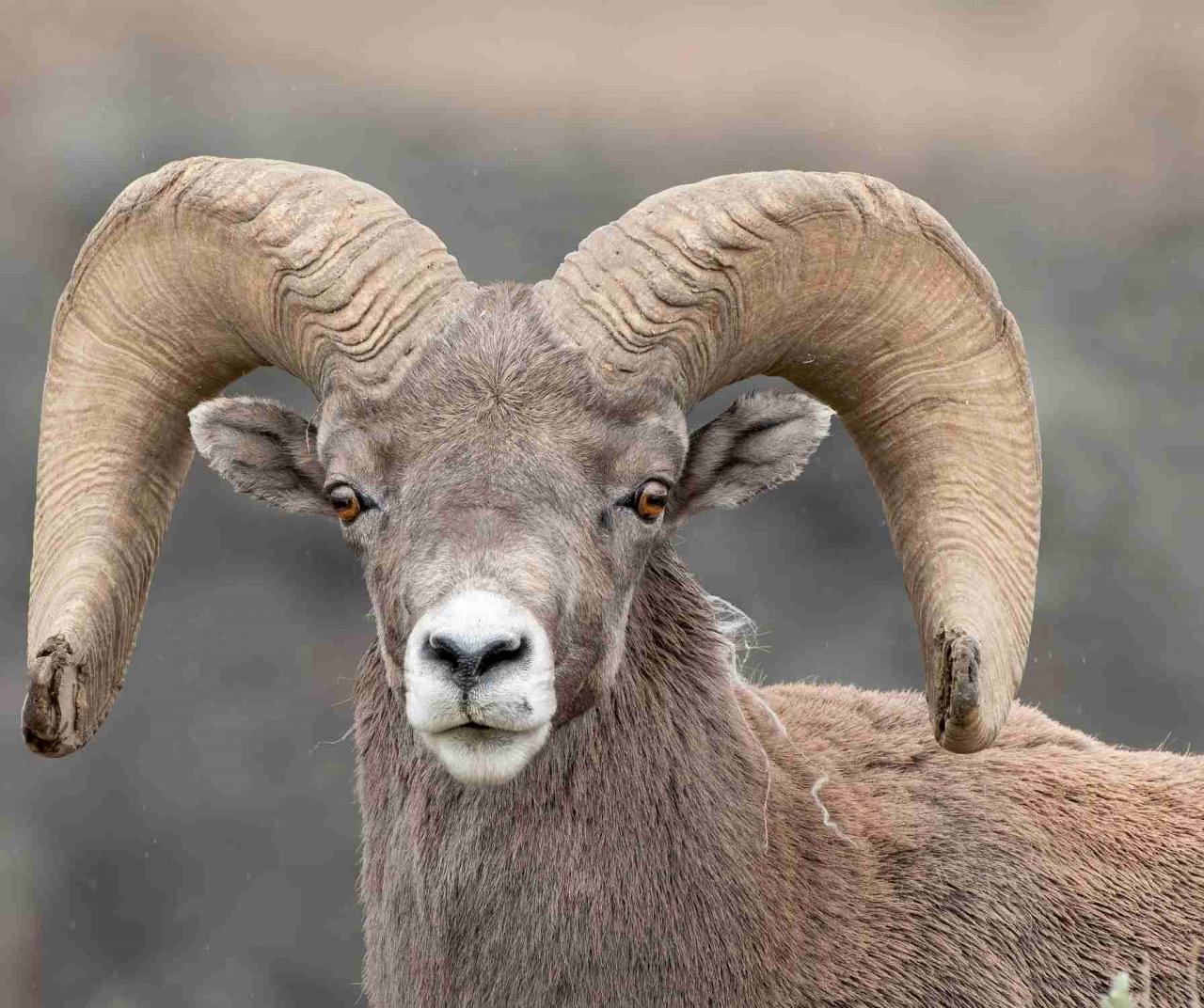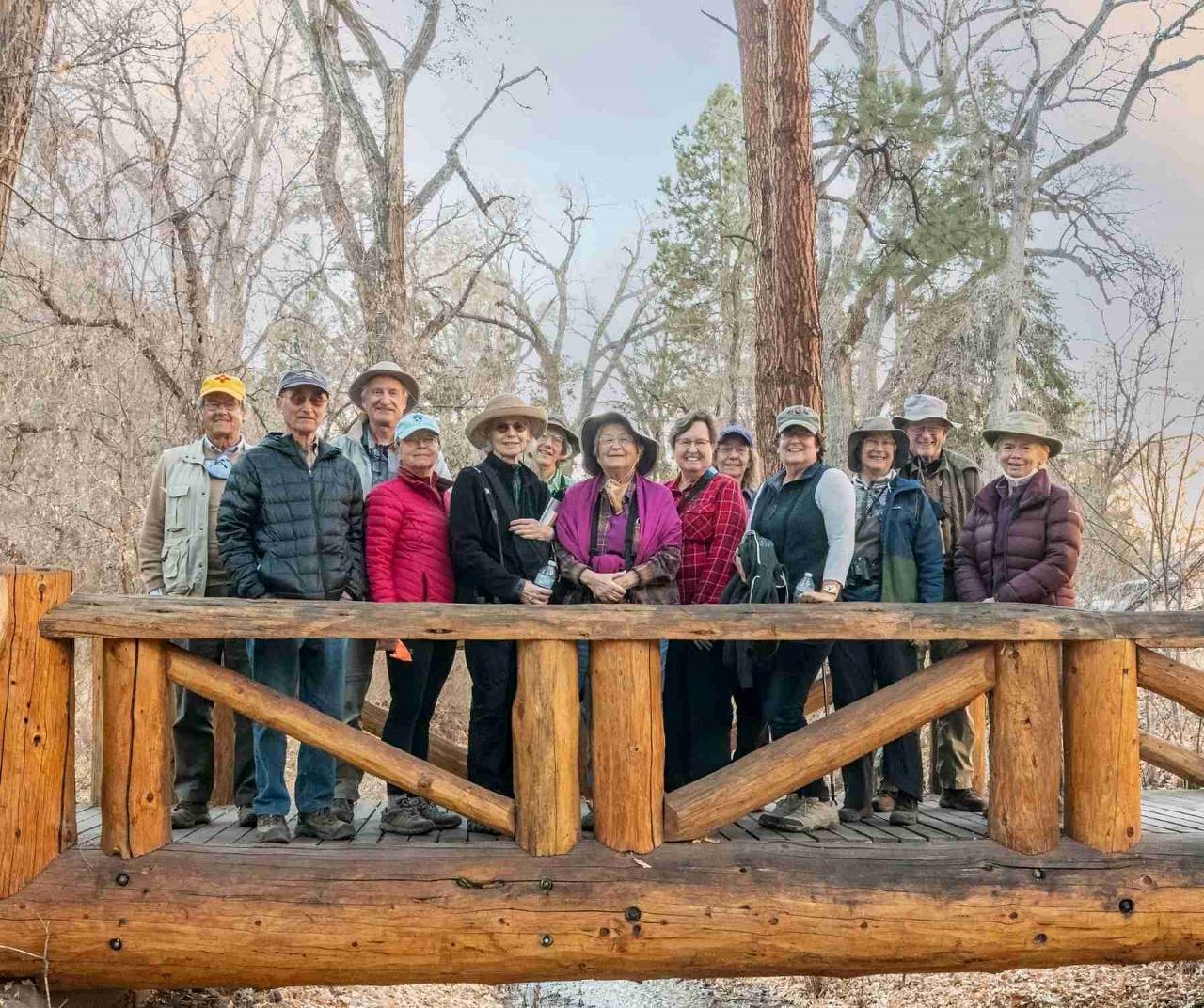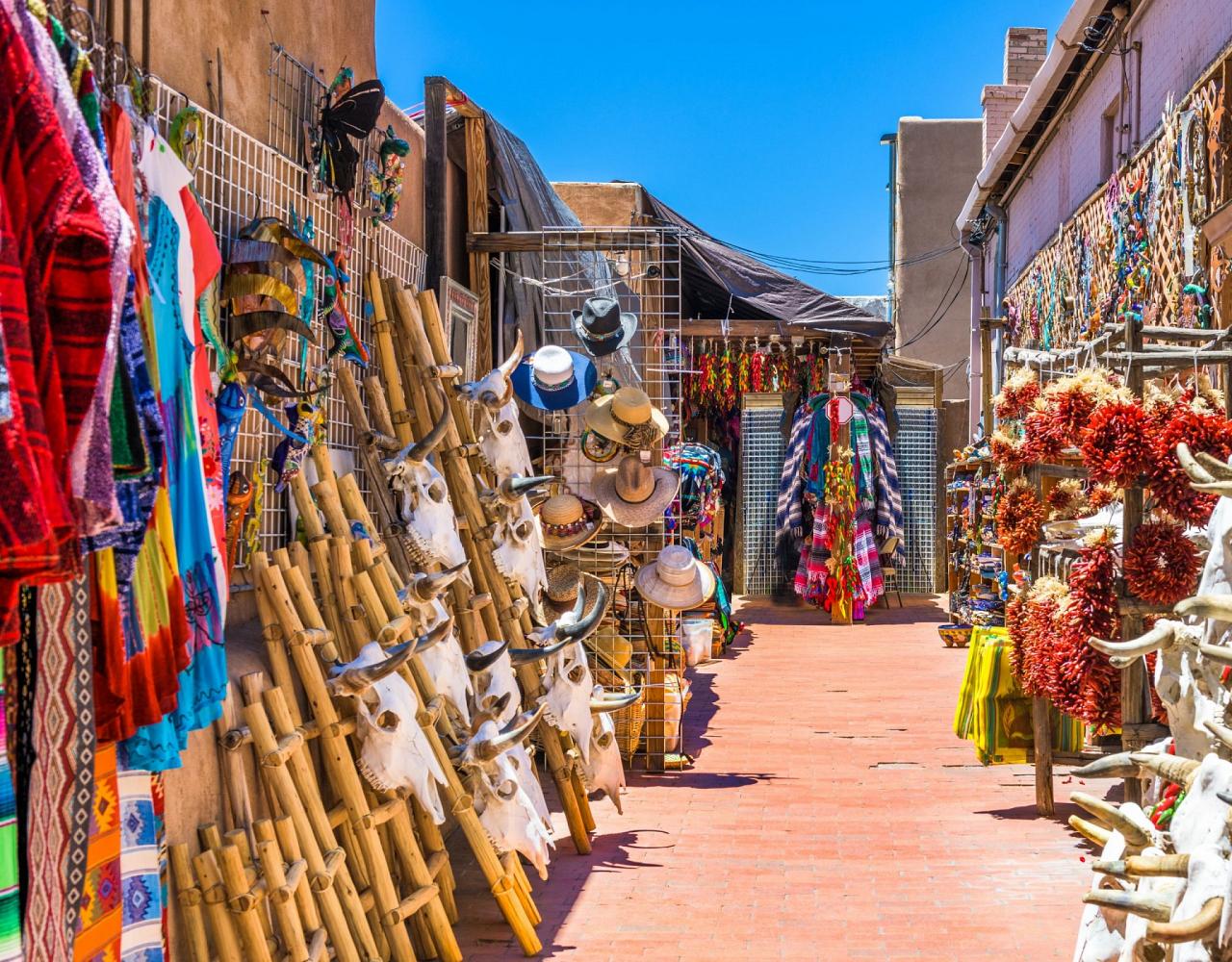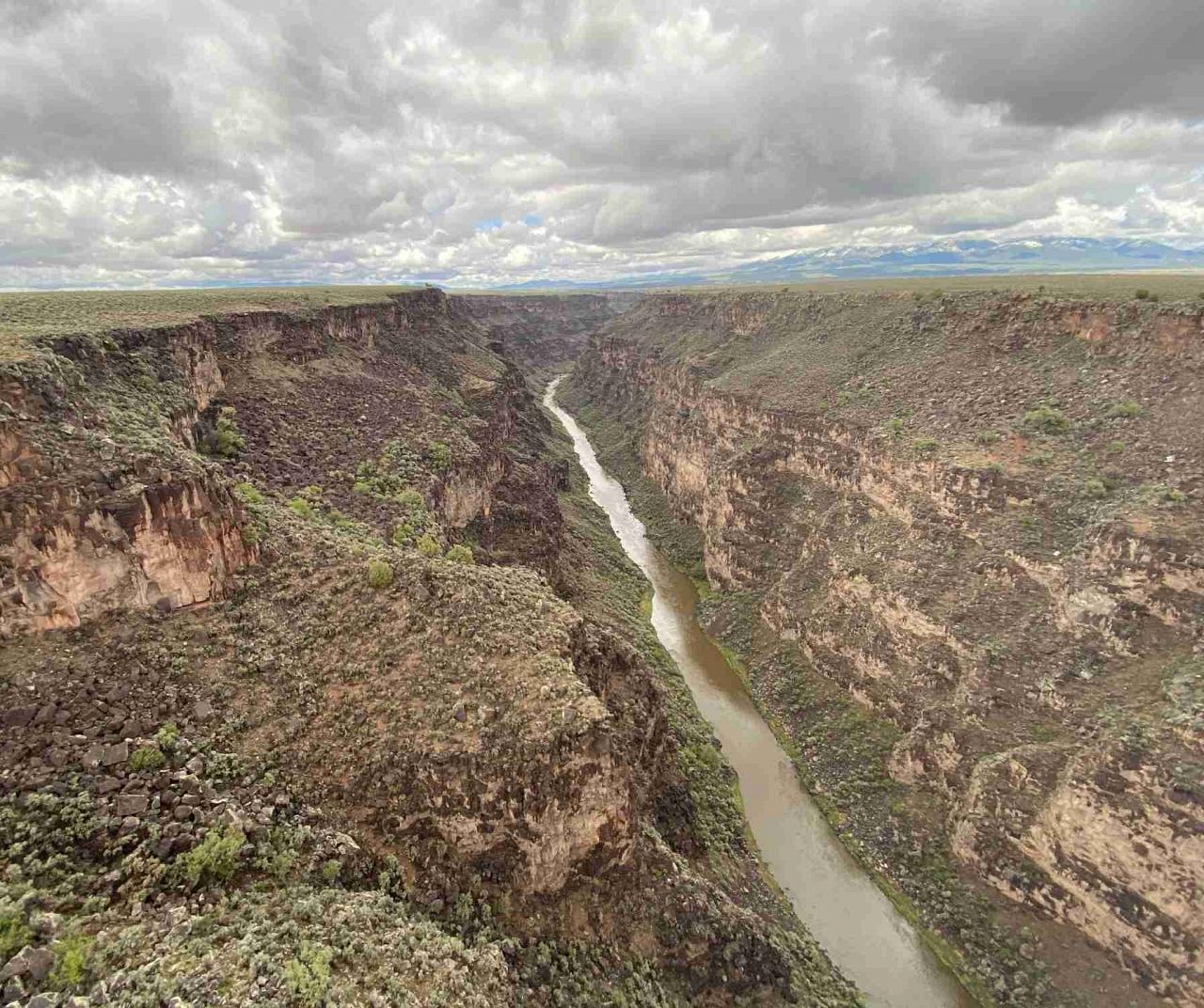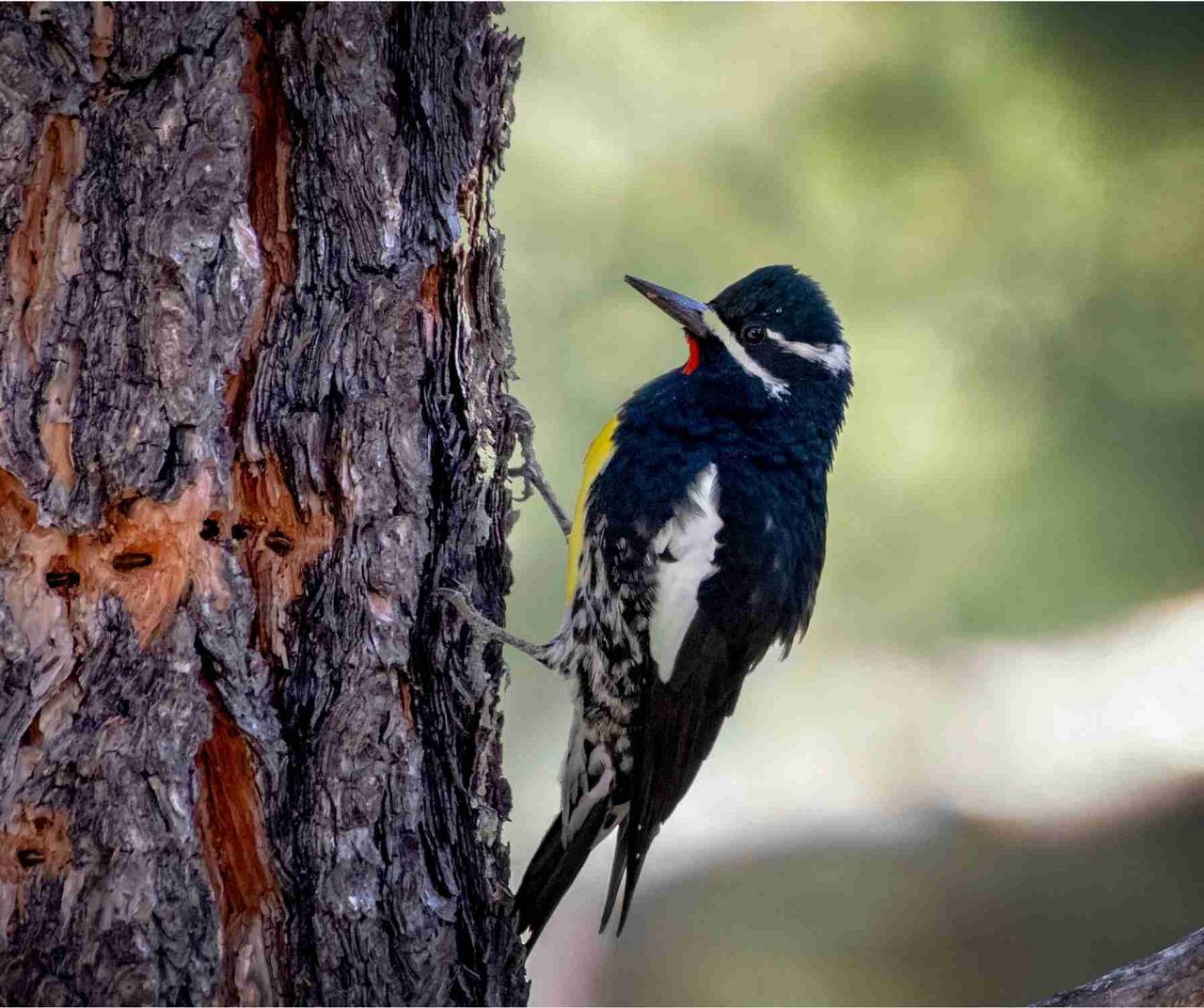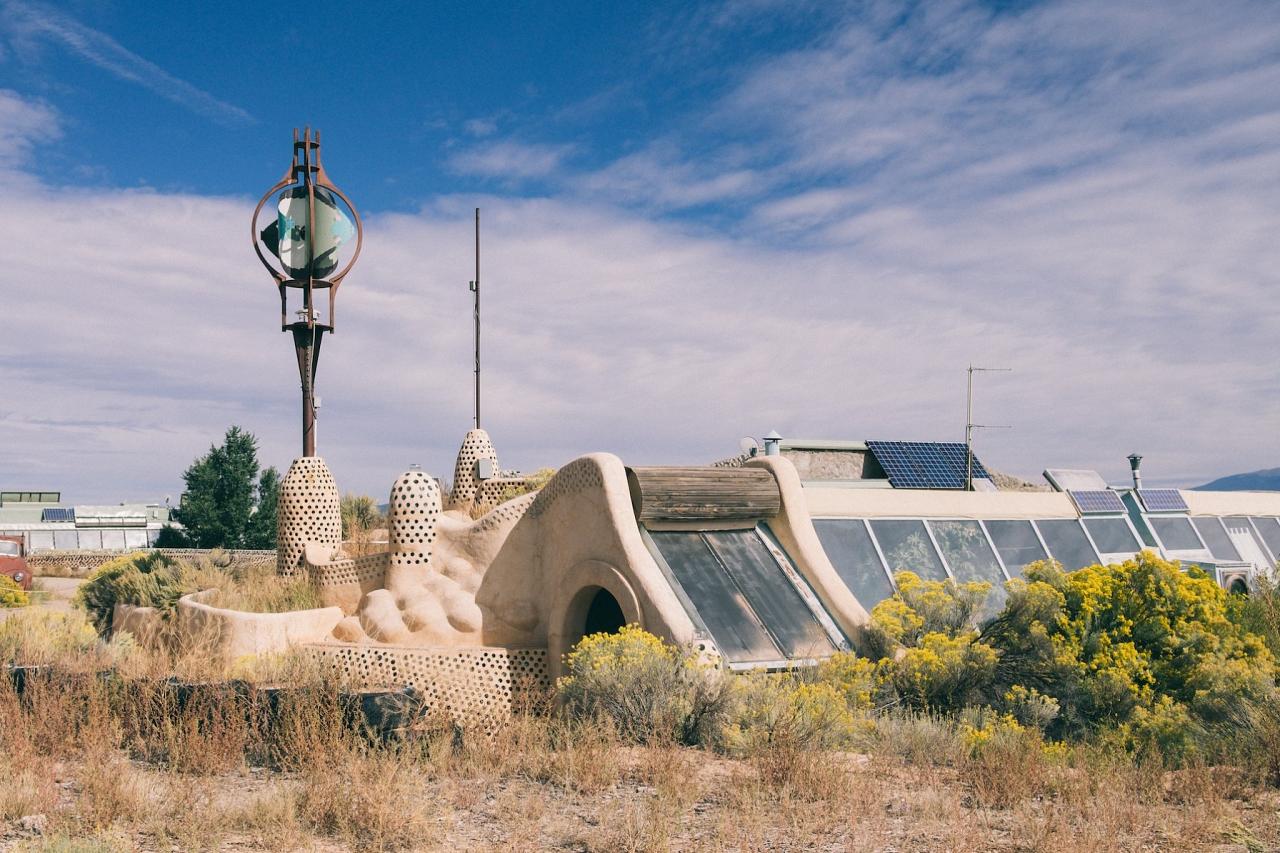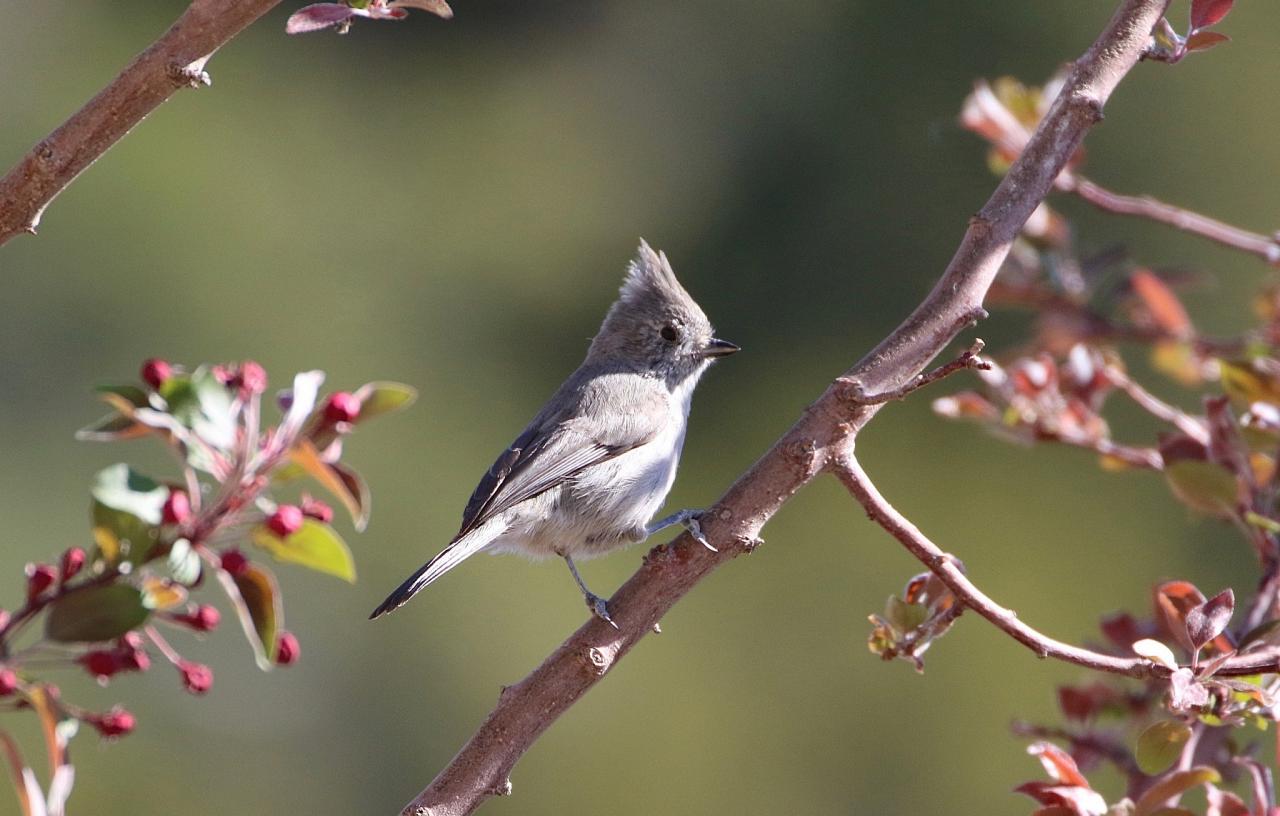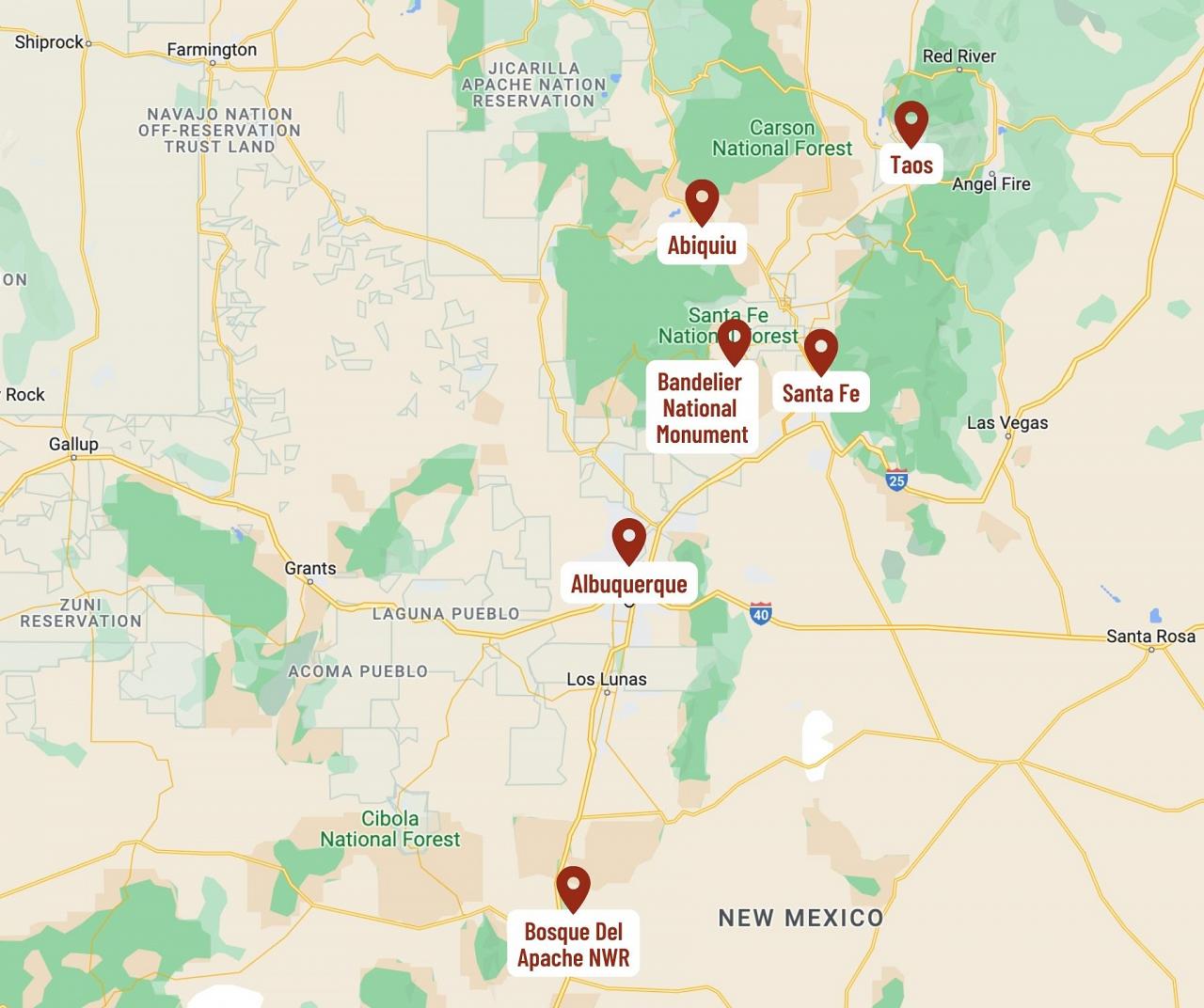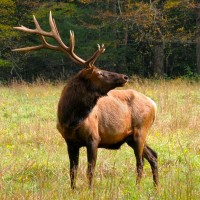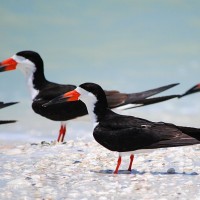- Overview
- Full Itinerary
- Photo Gallery
- Costing
- Travel Details
- Trip Reports
- Guides
- Map
- Know Before You Go
- Other Trips You May Like
Bring special meaning to your holiday season on a journey to a dramatic and beautiful part of the country. The winter solstice has great significance to Pueblo cultures, and both Albuquerque and Taos have special events to celebrate this festive time of year. Venturing to New Mexico off-season allows us affordable stays in Albuquerque and Taos at top-rate historic accommodations full of charm. Experience a wonderful blend of nature and culture and take care of your holiday shopping!
Discover outstanding geological and archeological sites, national monuments, historic trading posts, and modern galleries that feature some of the best Southwestern artists—past and present. By visiting the varied habitats of Bandelier National Monument and Bosque del Apache National Wildlife Refuge at this time of year, we avoid the crowds typical of other seasons.
Bosque del Apache, in fact the entire Middle Rio Grande valley, is one of the richest wintering areas for cranes and waterfowl in the Southwest. Each autumn and winter, tens of thousands of ducks (17 species!), geese, and cranes pour into the extensive fields, wetlands, and marshes of the valley.
In Albuquerque, we explore the birds and forested habitats of the surrounding mountains, and drive to the crest of the Sandia Mountains (over 10,000 ft) to seek out the three species of Rosy Finches at probably the most reliable place in the country to see them. While there, we enjoy the scenic bird’s eye view of the Rio Grande valley. This is a Naturalist Journeys sampler trip, with a blend of birding, travel photography, cultural attractions, and fun!
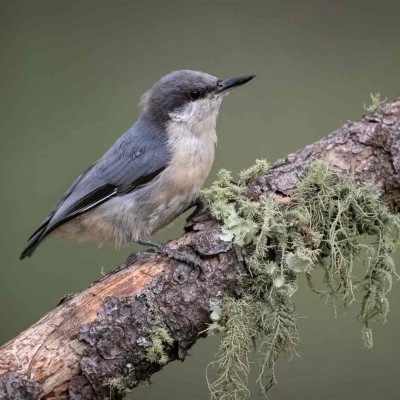
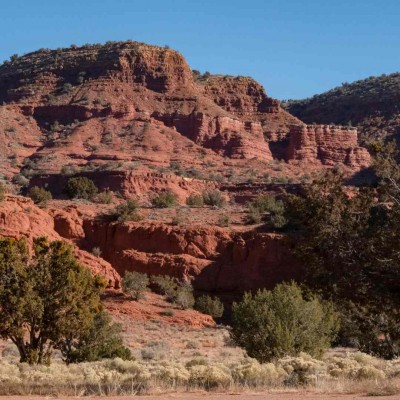
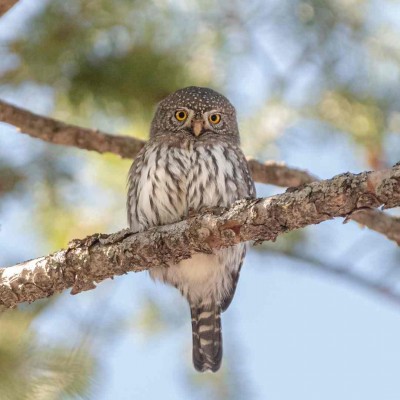
- "Bryan is wonderful. He is an amazing bird expert. And he dealt with everything with such patience and good humor. I hope to go on another NJ adventure with him as a
- guide." — 2023 New Mexico Client
Tour Highlights
- Travel through scenic and historically rich New Mexican villages and landscapes
- Search for three species of Rosy Finches
- Witness one of the most population-dense wintering areas for waterfowl and cranes in the Southwest
- Explore an authentic pueblo and meet local artisans
- Gaze upon the majestic Sangre de Cristo Mountains—the southernmost subrange of the Rockies
- Drive the fascinating High Road between Taos and Santa Fe, stop at Chimayo and other historic sites including the Santa Fe plaza with its many colorful vendors and wares.
- Take your taste buds on an adventure with New Mexico’s famous green chili (and learn the answer to the state question)!
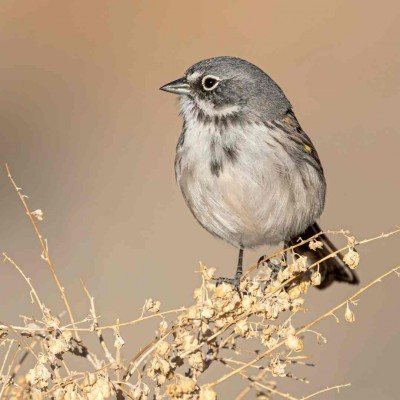
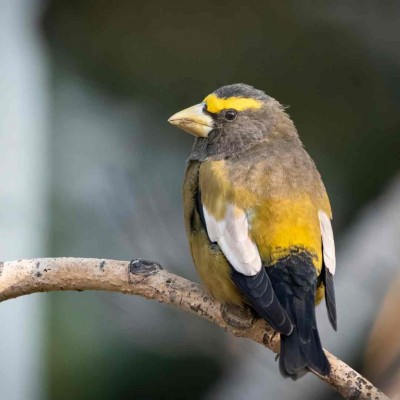
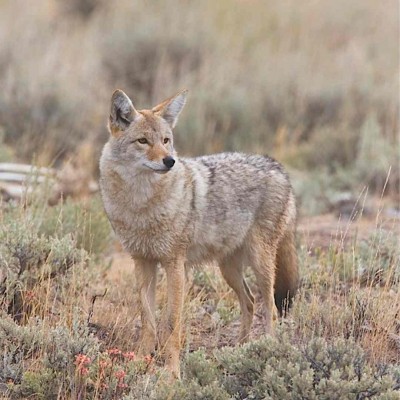
Trip Itinerary
Itineraries are guidelines; variations in itinerary may occur to account for weather, road conditions, closures, etc. and to maximize your experience.
Sat., Dec. 6 Arrive in Albuquerque
Early arrivers may choose to visit Albuquerque’s delightful Rio Grande Nature Center, where we look out over the fields and wetlands with the Sandia Mountains as a backdrop and we take a short walk on trails through beautiful riverside bosque (what locals call riparian cottonwood forest). Behind the large windows of the Antoine Predock-designed Nature Center building, we watch Wood Duck, Gadwall, American Wigeon, coots, and other wintering birds at a beautiful, willow-lined pond.
After birding and exploring the nature center, we settle into our lodgings, then if you wish, explore a bit of nearby Old Town decorated in holiday garb, and gather for a welcome dinner at one of our favorite restaurants.
Accommodations in Albuquerque (D)
Sun., Dec. 7 Sandia Mountains | Old Town Albuquerque
Today we explore the Sandia Mountains (Spanish for watermelon) on our drive up to the Sandia Crest at over 10,000 feet! We travel up the east side through a variety of oak, pine, and mixed conifer forests. This is a popular recreation area for residents. We stop to bird en-route, with a chance to see Northern Pygmy Owl, Williamson’s Sapsucker, Steller’s Jay, Mountain Chickadee, Pygmy Nuthatch, and Clark’s Nutcracker. A portion of the drive is heavily forested, and at stops such as Cienega Canyon and Capulin Spring, we may find more typically northern species such as Townsend’s Solitaire, Pine Grosbeak, Cassin’s Finch, Red Crossbill, or (if we are really lucky) American Three-toed Woodpecker. Views are spectacular and eventually we reach the tree line and the open, often snowy and wind-swept crest. Here, feeders have been set up that ALL THREE North American species of Rosy Finches (Brown-capped, Gray-crowned, and Black) are attracted to in most winters. We view the feeders from below, in the parking lot, or above from the side of the shop, depending on the wind and weather conditions.
The joy of a Sandia Crest birding day is that atop the world, the birds come to us! We also may have some good raptor viewing, with Merlin and Northern Goshawk both possible. We have lunch in nearby Sandia Park or Cedar Crest.
After our first half of the day in the Sandias with the Rosy Finches, we make our way south to Socorro. Time permitting, we make a quick visit to Bosque del Apache National Wildlife Refuge for sunset and the evening fly-in. Dinner tonight is at a local restaurant in Socorro.
Accommodations in Socorro (B,L,D)
Mon., Dec. 8 Bernardo | Bosque del Apache | Cranes & Geese
The Middle Rio Grande, including Bosque del Apache National Wildlife Refuge in central New Mexico, is one of the richest wintering areas for waterfowl and cranes in the Southwest. Each autumn, tens of thousands of ducks and geese converge in the extensive wetlands and marshes of the valley. Some years, this area harbors over 25,000 Snow and Ross’s Geese, as well as tens of thousands of Sandhill Cranes! In the morning, the noise is deafening as birds fly out of safe roosting areas to neighboring farm fields where they feed. Eagles and marauding Coyotes create quite a stir among the flocks—most often signaled by an explosion of thousands of geese. This is truly an experience not to be missed!
Our first stop during the day is the Bernardo Wildlife Management Area. This area has become a must-stop for any birding trip in the Middle Rio Grande. Managers plant extensive fields of corn, sorghum, and other crops to attract the cranes and geese. We admire the spectacle from the viewing platforms and wildlife drive, and walk a short distance to some viewing ponds.
We then continue further south to the legendary Bosque del Apache National Wildlife Refuge, where we enjoy a picnic lunch filled with a continual chorus of cranes and geese. One admirable feature of this refuge is the layout of the road system, which provides excellent proximity to many species. During the day, we drive the roads of the refuge looking for birds and other wildlife such as Mule Deer, Coyote, and Porcupine. Don’t be surprised if Wild Turkey or a herd of Javelina strut out from the brush! Bosque del Apache is legendary for the rarities that have occurred here over the years, such as the US’s only record of Rufous-necked Wood-Rail! The refuge, too, is at the northern edge of the range of some desert species such as Verdin and Pyrrhuloxia, which sometimes show themselves at the feeders. The refuge and surrounding areas are also excellent wintering sites for many raptors. Bald Eagle, American Kestrel, Northern Harrier, and Red-tailed Hawk are all fairly common. Ferruginous Hawk and Golden Eagle may also be seen in the area.
After sunset at the refuge, we enjoy a bit of local flavor for dinner in Socorro before returning to our lodging.
Accommodations in Socorro (B,L,D)
Tues., Dec. 9 Crane Rise | Explore Santa Fe
We start the morning with an early option to join the cranes and geese for sunrise. This offers a spectacular opportunity for photographers wanting dramatic sunrise lighting. For those who just want to experience morning blast-off, it’s truly something not to be missed. Sometimes thousands of birds taking to the air all at once is a true spectacle. Sunrise at Bosque del Apache, with its stunning backdrops and dynamic birds, is easily one of our favorite birding experiences.
Once we get our fill of the morning show, we head back to the hotel for breakfast. We then depart for Santa Fe, taking some of the back roads to look for more birds and wildlife and to see more of the varied landscapes that make up New Mexico. We head up the Rio Grande Valley from Socorro and then turn east at Bernardo, crossing the Rio Grande and climbing up the vast grasslands to the small towns of Abo and Mountainair at the southern end of the Manzano Mountains. Time permitting, we stop at the Abo unit of the Salinas Pueblo Missions National Monument, containing the scenic ruins of an ancient pueblo and the San Gregorio Mission. We then continue north through the Estancia Valley at the western edge of the vast Great Plains. This agricultural area is excellent for finding raptors in the winter, especially Ferruginous Hawk and, with luck, Golden Eagle.
We then continue our travel north, eventually meeting the Turquoise Trail, the old highway to Santa Fe which heads north on the east side of the Sandia Mountains. We stop for lunch in the historic mining town of Madrid at a local café; some may wish to spend a bit of free time enjoying this intriguing town. We conclude our travels by driving north into Santa Fe, passing through small towns such as Cerrillos (famous for its nearby ancient turquoise mines) and arrive at our hotel. Check in is followed by free time to explore Santa Fe; our hotel has a convenient shuttle service. For those who wish, our guides lead a birding trip to the nearby Santa Fe Canyon Preserve and Randall Davey Audubon Center this afternoon.
Tonight, we enjoy dinner at a local Santa Fe restaurant.
Accommodations in Santa Fe (B,L,D)
Wed., Dec. 10 Abiquiu | Ghost Ranch
This morning, we embark on a journey to the Chama River Valley and the town of Abiquiu. Along the way, we visit the unexcavated Poshuouinge Pueblo ruin, perched high on a hill above the Chama River. This impressive ruin (believed to have had 700 rooms!) is unexcavated, but the outlines of the buildings are clearly visible from the overlooks higher up the trail at the site. It is thought that the site was occupied from about 1375 to 1475, and its inhabitants were the ancestors of the people living in the modern-day Santa Clara and Ohkay Owingeh (formerly San Juan) Pueblos.
We then head to the nearby small town of Abiquiu (“wild chokeberry place” in the native Tewa language). In addition to being the town where Georgia O’Keeffe spent her winters, Abiquiu was the start of the Old Spanish Trail, the former trading route between Santa Fe and California. After lunch at the comfortable Abiquiu Inn, we proceed to the nearby Ghost Ranch where we tour the landscape that so inspired Georgia O’Keeffe, including some of the specific formations (and even trees!) that she painted. If time permits, there are lovely hikes and museums to explore here, and much to see. We return to Santa Fe for dinner.
Accommodations in Santa Fe (B,L,D)
Thurs., Dec. 11 Taos | Pueblos & Museums
We leave Santa Fe early and stop in Española, first settled by Don Juan de Oñate in 1598, for breakfast en-route. We then continue driving north along the Rio Grande, soon entering the steep and scenic lower gorge. As we travel along the river, we look for Common Merganser, Common Goldeneye, and other waterbirds along the river. Toward the end of our trip to Taos, we climb out of the gorge and emerge onto the vast, sagebrush-covered plateau that surrounds the Taos area and extends north into Colorado.
Our first stop for the morning is the Rio Grande Gorge Bridge, just west of Taos proper. This bridge, tenth highest in the US, spans the Rio Grande Gorge and we walk along the rim and on the bridge to gaze at the river some 600 feet below. On many occasions, Rocky Mountain Bighorn Sheep can be spotted in the gorge or on the adjacent mesas, signs of a successful reintroduction effort on the part of Taos Pueblo and the State of New Mexico. We then head to Taos itself, stopping first at the Millicent Rogers Museum. The museum, named after its founder, an heiress of the Standard Oil fortune, has an amazing collection of fine art. It is particularly strong on Native American art, with a comprehensive collection of Pueblo pottery from all the current pueblos and many historical pieces. An entire room is devoted to the legendary potter Maria Martinez from San Ildefonso Pueblo, who almost single-handedly rediscovered the technique of black-on-black pottery and produced many superb pieces. Another fascinating part of the collection is several 19th Century Navajo blankets, which are extremely rare.
After lunch in Taos at a favorite restaurant near the Plaza, we have a bit of free time to explore the center of this famous town. We travel to the stunning Taos Pueblo, or “Place of the Red Willows” in the native Tiwa language, framed by the rugged Sangre de Cristo Mountains. Probably the oldest continuously inhabited place in North America, built between 1000 and 1450, many Pueblo people still inhabit this village; it is a pleasure and a privilege to share time in their ancient home as they prepare for the family celebrations of Christmas and the winter solstice. After a guided tour, we take time to walk through some areas of the pueblo where we can visit with artists who live and work here. Many parts of the pueblo, including the Catholic Church, contain rock and adobe structures that date back a thousand years. Enjoy the mouth-watering smell of bread baking in the hornos (clay ovens), or the fragrance of juniper-log fires warming the artists’ homes.
After our tour ends, we make the return trip to Santa Fe. Time permitting, we stop and visit the San Francisco de Asís Mission Church in Ranchos de Taos, made famous by Georgia O’Keeffe, Ansel Adams, and Paul Strand. The trip has nearly endless photo opportunities of the Sangre de Cristo Mountains, which have inspired many artists and photographers, and where Robert Redford’s The Milagro Beanfield War was set.
We enjoy dinner at one of our favorite restaurants in Santa Fe.
Accommodations in Santa Fe (B,L,D)
Fri., Dec. 12 Jemez Mountains | Bandelier National Monument
This morning we leave Santa Fe and travel an hour northwest through the Jemez Mountains to Bandelier National Monument, a gem of the National Park system. The monument boasts the highest density of archeological sites of any national park, all in numerous distinctive and beautiful canyons carved into the Pajarito (“Little Bird”) Plateau. The ancestors of modern pueblo tribes inhabited this site—which has an abundance of water—even after abandoning others in their region. We walk trails established in the 600-foot-deep Frijoles Canyon to examine the historic structures. The geology of the area is fascinating as well, with layers of pale ash and tuff encrusting darker, denser strata beneath, portraying the rocks’ volcanic origin. We also have the opportunity to look for some of the typical winter birds of the mountains of New Mexico, including Townsend’s Solitaire, Mountain Chickadee, Juniper Titmouse, three species of nuthatch, and, if we’re lucky, Pinyon Jay.
After lunch at a favorite restaurant in White Rock, we travel to nearby Los Alamos to make a brief stop at the Bradbury Science Museum to explore the history of the Manhattan Project (another important aspect of New Mexico’s history) and then continue back to Santa Fe. If there is interest in more free time in Santa Fe, we can send one vehicle back early from Los Alamos.
Enjoy a final dinner tonight at one of our favorite local restaurants in Santa Fe with time to recount our adventures.
Accommodations in Santa Fe (B,L,D)
Sat., Dec. 13 Departures from Albuquerque
After breakfast, we make the one-hour drive to take you directly from Santa Fe to the Albuquerque International Airport. You may want to stay on a few extra days to truly enjoy and explore the “City Different.” (B)
Cost of the Journey
Cost of the main journey is per person, based on occupancy: $3690 DBL / $4670, from Albuquerque, NM.
This cost includes: accommodations for seven nights, meals as specified in the itinerary (B=breakfast, L=lunch, D=dinner), airport welcome and transfer or hotel shuttle, land transportation during the journey, professional guide services, park and other entrance fees, and miscellaneous program expenses.
This cost does not include: round-trip airfare to and from Albuquerque, NM or items of a personal nature such as laundry, telephone, drinks from the bar, gratuities for luggage handling or personal services.
Travel Details
Please plan to make air travel plans only after the minimum group size has been met. We will send you a confirmation email as soon as the trip has been confirmed.
Arrival and Departure Airport: Albuquerque International Sunport (ABQ)
Arrival Time and Instructions: December 6, no later than 2:00 PM if you want to go birding at the Rio Grande Nature Center, and by 5:00 PM if you plan to go directly to the hotel to meet up for the welcome dinner. If you plan on arriving later in the day, please take a taxi to the hotel in Old Town in time to join us for dinner. Meet in the lobby at 6:30 PM.
Departure Time and Instructions: December 13, after 11:00 AM. After breakfast on December 13, we have a 1-hour drive from Santa Fe back to Albuquerque and plan to arrive at the airport by 9:30 AM.
Travel Tip: If you want to arrive a day or two early, Albuquerque is a great city known for its culture, cuisine, and architecture. The Albuquerque Museum is located right in Old Town within easy walking distance from our hotel and is a great showcase of the art and history of Albuquerque. Adjacent to the Albuquerque Museum is the New Mexico Museum of Natural History and Science has exhibits depicting billions of years of history in the state. Trendy shops and restaurants abound. If you want to go farther afield, Petroglyph National Monument is a great place to spend part of a day and has thousands of petroglyphs that were carved between 400 and 700 years ago. It’s best to have a rental car if you want to visit Petroglyph National Monument, although it is possible to get there with a taxi or Uber/Lyft.
Hotel Recommendations:
TOP CHOICE: Hotel Albuquerque at Old Town; 866-505-7829. Adding a night to our first night tour hotel makes the best use of your added time in a wonderful hotel and setting. You will need to taxi/Uber/Lyft to get there. We will pick up there for the Rio Grande Nature Center birding. If this is your choice, please book this online and give us the confirmation number that we submit when we send our final room list, the goal being you don’t have to change rooms. If you want to stay near the airport we recommend you book (and we can pick you up at): Comfort Suites Albuquerque Airport (505) 705-6500 Best Western Airport Albuquerque Inn Suites Hotel & Suites (505) 242-7022
Travel Tip: If you wish to extend your stay in Santa Fe, there are plenty of attractions. In addition to the many museums, the Saint Francis Cathedral, built in the late 1800s in French Romanesque architecture, stands out among the traditional Santa Fe architecture and has a rich history. The nearby Canyon Road is home to over 100 art galleries, which is the highest density in the US. The galleries have a wide range of art created by artists from all over the world. If you pick up a rental car, Pecos National Historical Park is only a 30-minute drive from Santa Fe and holds 12,000 years of history. There are numerous hotels you can book, we suggest you first try to add extra nights for you at the Hotel Santa Fe from our tour.
Browse below for trip reports and species lists from past versions of this and other tours from this destination.
New Mexico
- October 2011
- December 2021
- December 2022
- December 2023
- December 2024
- January 2025 (Winter Birding)
-
Dave Mehlman

Dave is a naturalist with interests in birds, migration, ecosystems and natural disturbances, plants, and gardening. He holds a PhD from the University of New Mexico. Dave worked for The Nature Conservancy for 25+ years as Director of its Migratory Bird Program. He has researched in Latin American and the Caribbean. An avid birder, Dave enjoys teaching about natural habitats and local cultures. He has published papers in scientific and popular journals.
Other trips with Dave Mehlman
-
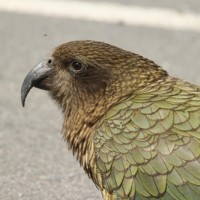 Birds & Nature of New Zealand FULL - Check out Island of Wonder: Birds & Nature of Sri Lanka!January 7 - 23, 2026
Birds & Nature of New Zealand FULL - Check out Island of Wonder: Birds & Nature of Sri Lanka!January 7 - 23, 2026 -
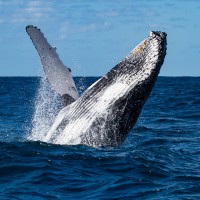 Southern California: Spring Coastal BirdingFebruary 16 - 23, 2026
Southern California: Spring Coastal BirdingFebruary 16 - 23, 2026 -
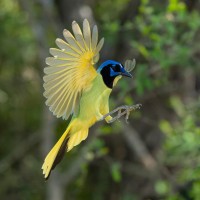 South Texas Birding & NatureMarch 11 - 19, 2026
South Texas Birding & NatureMarch 11 - 19, 2026 -
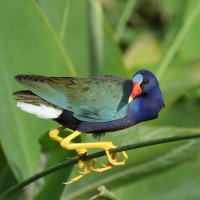 Texas Coast & Big Thicket A Legacy Club Journey for The Nature ConservancyApril 22 - 27, 2026
Texas Coast & Big Thicket A Legacy Club Journey for The Nature ConservancyApril 22 - 27, 2026 -
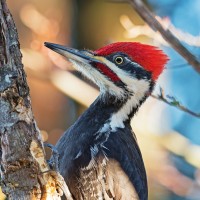 Oregon's Malheur NWR & Woodpecker WonderlandMay 18 - 27, 2026
Oregon's Malheur NWR & Woodpecker WonderlandMay 18 - 27, 2026 -
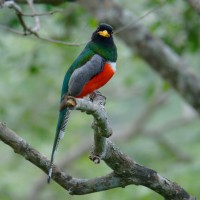 Arizona Monsoon Madness: Birding & Nature in a Season of Wonder!August 10 - 17, 2026
Arizona Monsoon Madness: Birding & Nature in a Season of Wonder!August 10 - 17, 2026 -
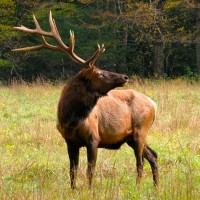 Yellowstone in The FallSeptember 19 - 25, 2026
Yellowstone in The FallSeptember 19 - 25, 2026 -
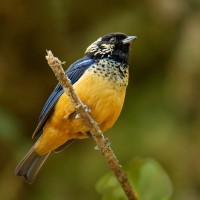 Western Panama: Tranquilo BayOctober 11 - 18, 2026, w/Mt. Totumas extension
Western Panama: Tranquilo BayOctober 11 - 18, 2026, w/Mt. Totumas extension -
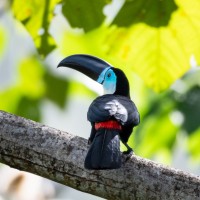 Thanksgiving in Trinidad & TobagoNovember 22 - December 1, 2026
Thanksgiving in Trinidad & TobagoNovember 22 - December 1, 2026
-
-
Bryan Calk
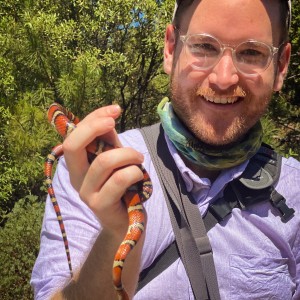
Bryan started birding at Fort Clark Springs in southwest Texas when he was 10 years old and never stopped. He got his first taste of guiding while leading trips for the Rio Brazos Audubon Society during college. After graduating from Texas A&M in 2015 with a degree in genetics, Bryan worked as an avian field biologist on several projects across Texas and New Mexico. Currently residing in Albuquerque as a professional birding tour guide, he leads field tours, workshops, and youth birding programs across the US. In his free time, Bryan enjoys butterflies, searching for herps, photography, art, cooking, and gardening.
Other trips with Bryan Calk
-
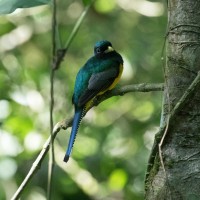 Belize: Three Great Lodges FULL - See our March departure!January 5 - 15, 2026
Belize: Three Great Lodges FULL - See our March departure!January 5 - 15, 2026 -
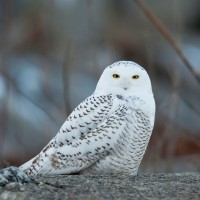 Minnesota: Winter Owling Tour FULL - Check out Yellowstone: Winter Wolf Watching!January 25 - 30, 2026
Minnesota: Winter Owling Tour FULL - Check out Yellowstone: Winter Wolf Watching!January 25 - 30, 2026 -
 Minnesota: Winter Owling Tour FULL - Check out Yellowstone: Winter Wolf Watching!February 1 - 6, 2026
Minnesota: Winter Owling Tour FULL - Check out Yellowstone: Winter Wolf Watching!February 1 - 6, 2026 -
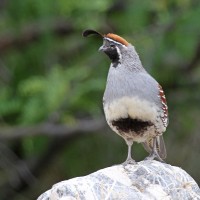 Arizona: Sky Island Winter Birding Blitz Only two spaces left!February 21 - 27, 2026
Arizona: Sky Island Winter Birding Blitz Only two spaces left!February 21 - 27, 2026 -
 Nebraska's Platte River Prairies & Sandhill Crane Migration A Private Tour for The Nature ConservancyMarch 15 - 19, 2026
Nebraska's Platte River Prairies & Sandhill Crane Migration A Private Tour for The Nature ConservancyMarch 15 - 19, 2026 -
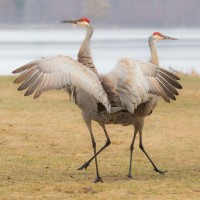 Nebraska's Platte River Prairies & Sandhill Crane Migration A Private Tour for The Nature ConservancyMarch 21 - 26, 2026
Nebraska's Platte River Prairies & Sandhill Crane Migration A Private Tour for The Nature ConservancyMarch 21 - 26, 2026 -
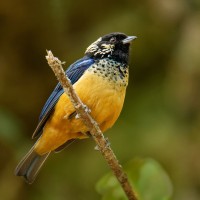 Western Panama: Tranquilo BayApril 7 - 14, 2026, w/Mt. Totumas extension
Western Panama: Tranquilo BayApril 7 - 14, 2026, w/Mt. Totumas extension -
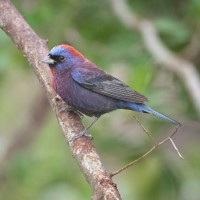 Texas Hill CountryApril 24 - 29, 2026
Texas Hill CountryApril 24 - 29, 2026 -
 Ohio: The Biggest Week in Birding Only one room left!May 13 - 20, 2026
Ohio: The Biggest Week in Birding Only one room left!May 13 - 20, 2026 -
 Alaska’s Northern Passages & Glacier BayJuly 11 - 18, 2026
Alaska’s Northern Passages & Glacier BayJuly 11 - 18, 2026 -
 Alaska SamplerAugust 10 - 18, 2026
Alaska SamplerAugust 10 - 18, 2026 -
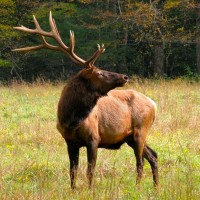 Yellowstone in The FallSeptember 26 - October 2, 2026
Yellowstone in The FallSeptember 26 - October 2, 2026 -
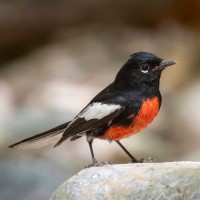 Southeast Arizona: Sky Island Fall SamplerNovember 1 - 8, 2026
Southeast Arizona: Sky Island Fall SamplerNovember 1 - 8, 2026
-
Essential Information +
Packing List +
Suggested Reading List +
Useful Links +
Photo credits: Banners: Sandhill Cranes, Hugh Simmons; Taos Mountains, by Kyle Pontius on Unsplash; Black Bison, by Eric Murray on Unsplash; Primary: Pygmy Nuthatch, Brian Calk; View from O'Keefe Home, Lynn Tennefoss; Gadwall, Northern Pygmy Owl; Brian Calk Secondary: Coyote, Greg Smith; Evening Grosbeak, Brian Calk; Sagebrush Sparrow, Brian Calk Gallery: Ferruginuous Hawk, Brian Calk; Bighorn Ram, Brian Calk; Group Photo, Brian Calk; Northern Harrier, Greg Smith; Scenic, Brian Calk; Williamson's Sapsucker, Brian Calk; Juniper Titmouse, by John Duncan on Unsplash Itinerary: American Wigeon, Tom Dove; Wood Duck, Sandy Sorkin; Red-tailed Hawk, Sandy Sorkin; Sandhill Cranes, Greg Smith; Bald Eagles, Sandy Sorkin; ; Sandhill Crane, Peg Abbott; Sunset, Naturalist Journeys Stock; Taos, by Leon Bublitz on Unsplash.









